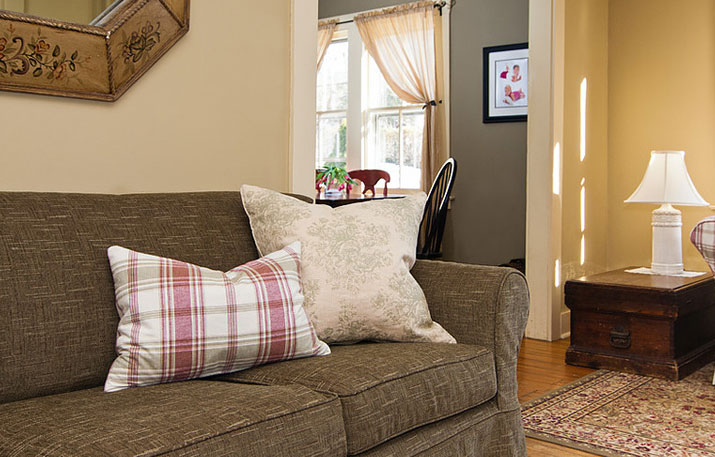
29 Oct Interior Design Fundamentals For A Room
When designing a room, implementing basic design fundamentals can avoid costly errors. Here are the fundamentals that you would want to keep in mind. Creating a floor plan is the first step. A floor plan is a rendering of the room’s footprint showing the location of the doors, windows, etc. This rendering is done to scale. It will include floor covering and desired furniture to be placed in the room. With a floor plan you can identify a proper traffic flow. Traffic flow is an important factor if housing a television in the room. It will show the ideal size of the floor covering and the scale of furniture anticipated for that particular space. This avoids purchasing a rug which is too small or a sofa which is too large. Keep in mind a living room should have a seating for five people.
If you have desired art which will be placed in this room, that needs to be viewed and considered next. Your design inspiration my come from your art. That will affect the style of the furniture, fabrics you select and the color on the walls.
With proper furniture placement the first selection should be the floor covering. This is the foundation of the room. Pattern or no pattern, light or dark this decision will help direct you to what the furniture style should be as well as the fabrics on the upholstered pieces. For example, if you have a floral area rug, you might consider a monochromatic ( tone on tone ) sofa, two, striped club chairs and a small geometric print on an occasional chair. These different patterns and textures combined with the print on the rug would provide a lovely transition. Be mindful of serviceability with your fabric selections. The durability and forgiveness towards stains is certainly a consideration when selecting fabrics.
Once upholstery fabrics are selected you will feel confident on what style and finish you should select for your case goods. Case goods are end tables, cocktail table, entertainment console table, etc. A warm, medium brown stain feels classic and traditional while a dark color stain or black finish tends to feel more transitional or contemporary. The days of matching all your case good pieces have long gone. A room with different pieces is much more interesting.
The next selection should be color for the walls and trim. Remember a flat finish paint will hide imperfections on your walls better than any other finish of paint. Also when using a warm or dark color, a flat paint will give you the most saturation of color. If you have particular art to be hung in the room, be certain to identify it’s location at this time. You don’t want to have custom window treatments installed and realize you do not have adequate wall space for your special art piece. If not, the next step would be window treatments. Window treatments should provide needed functionality with final desired accent to the room.
Accessorizing with pillows, picture frames and a pretty throw personalizes your space. Animal prints and over sized down and feather pillows give an updated, unexpected look. Embellishments such as decorative cording, tassel and fringe trimmings add beautiful detail. Accessorizing is the “cherry on the sundae”. Take your time and enjoy this process.
It is never a poor investment to hire a designer to assist in formulating a “game plan” for your space. A designer will be certain your design concept creates flow and continuity to adjoining rooms. If you opt for the professional expertise of a designer, select someone with whom you “connect” with. The two of you are more likely to share a similar vision, experience a successful project, and enjoy each other’s company. Happy Designing!



